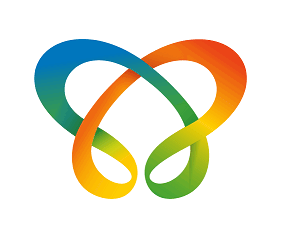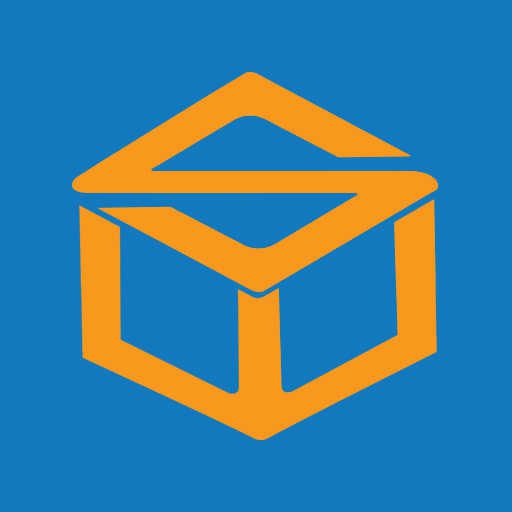Description

Red Technology – tradeit

Inoday eCommerce Solution
Comprehensive Overview: Red Technology – tradeit vs Inoday eCommerce Solution
Overview of Red Technology – tradeit and Inoday eCommerce Solution
a) Primary Functions and Target Markets
Red Technology – tradeit:
-
Primary Functions:
- Red Technology's tradeit is an advanced eCommerce platform aimed at providing comprehensive online retail solutions. It includes features for content management, customer management, order management, and inventory control. The platform also offers marketing tools, personalization features, and sophisticated search capabilities to enhance the shopping experience.
- tradeit is also known for its B2B functionalities, offering features like customer-specific pricing, trade accounts, and bespoke catalog setups.
-
Target Markets:
- B2B and B2C retailers who require robust, scalable, and flexible eCommerce solutions.
- Businesses looking for tailored eCommerce experiences, particularly in sectors like fashion, food & beverage, and wholesale trade.
Inoday eCommerce Solution:
-
Primary Functions:
- Inoday delivers eCommerce solutions built around Netsuite's suite of cloud-based ERP and CRM tools. It offers functionalities such as inventory management, financial integration, and order processing.
- The solution is noted for seamless integration with Netsuite, offering an all-in-one platform that combines eCommerce with back-office operations.
-
Target Markets:
- Companies already using or planning to implement Netsuite ERP for a unified business management approach.
- Businesses in need of scale and enterprise-grade functionalities, often within sectors such as manufacturing, IT, and services.
b) Comparison in Terms of Market Share and User Base
Both platforms focus on different niches within the eCommerce industry, making direct market share or user base comparisons challenging. However, some general insights can be noted:
-
Red Technology – tradeit:
- Primarily popular in the UK and European markets, where it has carved out a niche among mid-sized to large online retailers.
- It does not have the same level of global presence as larger platforms like Shopify or Magento but is highly regarded for specialized solutions in its core markets.
-
Inoday eCommerce Solution:
- Gaining traction primarily due to its integration with Netsuite, appealing to existing Netsuite users worldwide.
- Its market share is strongly tied to the Netsuite ecosystem and has a significant presence in regions where Netsuite is popular, such as North America.
c) Key Differentiating Factors
-
Integration and Ecosystem:
- tradeit is standalone with an emphasis on customizability and sector-specific solutions.
- Inoday offers tight integration with Netsuite, making it an attractive option for businesses looking for an integrated ERP/eCommerce system.
-
Customization and Flexibility:
- tradeit excels in providing customized solutions tailored to specific business needs, making it suitable for companies requiring extensive modifications.
- Inoday provides customization within the Netsuite framework, offering standardized features along with customizable modules.
-
Industry Focus:
- tradeit focuses more on providing solutions for consumer-facing industries with a need for detailed customer interactions.
- Inoday leans more towards businesses that benefit from comprehensive ERP solutions, often found in service-oriented or product-based industries that require tight integration between eCommerce and other business processes.
In summary, the choice between Red Technology's tradeit and Inoday eCommerce Solution largely depends on a business’s existing systems, industry vertical, and specific needs for platform integration and customization. Each offers a unique value proposition tailored to different market sectors and operational requirements.
Contact Info

Year founded :
Not Available
Not Available
Not Available
Not Available
Not Available

Year founded :
Not Available
Not Available
Not Available
Not Available
Not Available
Feature Similarity Breakdown: Red Technology – tradeit, Inoday eCommerce Solution
When comparing eCommerce solutions like Red Technology's tradeit and Inoday eCommerce Solution, a detailed feature analysis is essential to determine their suitability for different business needs. Here's a synthesized breakdown based on typical feature sets these types of platforms offer:
a) Core Features in Common
-
Product Management:
- Both platforms provide robust product management tools to handle various product categories, descriptions, and attributes.
-
Order Management:
- Comprehensive order processing functions, including order creation, processing, and tracking.
-
Customer Management:
- Tools for managing customer data, accounts, and segmentation.
-
Payment Gateway Integration:
- Support for multiple payment gateways to facilitate smooth transaction processes.
-
SEO Optimization Tools:
- Built-in SEO features to enhance product visibility and search engine rankings.
-
Promotions and Discount Management:
- Capabilities for creating and managing promotions, discounts, and coupons.
-
Responsive Design:
- Interfaces that adapt well to various devices, ensuring a consistent user experience across desktops, tablets, and smartphones.
-
Analytics and Reporting:
- Advanced reporting tools to analyze sales, customer behavior, and site performance.
b) User Interface Comparison
-
Red Technology – tradeit:
- Known for its customizable user interface, allowing businesses to tailor the look and feel to align with their brand identity. The UI is typically focused on providing a seamless and logical flow for both end-users and administrators, with a strong emphasis on user experience (UX).
-
Inoday eCommerce Solution:
- Offers a more template-driven approach, which can be advantageous for quick deployments. The UI is generally designed to be intuitive and straightforward, catering to businesses that prefer ease of use over extensive customization.
c) Unique Features
-
Red Technology – tradeit:
- B2B Capabilities: Advanced features supporting B2B operations, such as custom pricing, account management, and multi-site capabilities.
- Integrated CRM: Includes built-in CRM functionalities, eliminating the need for third-party integrations for customer relationship management.
- Advanced Personalization: Sophisticated tools for personalizing the customer journey and experience.
-
Inoday eCommerce Solution:
- NetSuite Integration: Deep integration with NetSuite ERP, providing seamless data flow between the eCommerce platform and back-office operations. This is particularly beneficial for businesses already utilizing NetSuite.
- Cost Efficiency: Typically more affordable with strong ERP integration benefits, appealing to small to medium-sized businesses looking for a cost-effective solution.
- Simplicity and Speed: Emphasizes quick setup and deployment, which is ideal for businesses aiming to go live rapidly without extensive customization.
In conclusion, while both eCommerce platforms share several core features essential for online retail operations, they cater to slightly different markets based on their unique features and user interface styles. Businesses must consider these aspects relative to their specific needs, such as B2B functionalities, integration requirements, customization preferences, and budget constraints.
Features

Not Available

Not Available
Best Fit Use Cases: Red Technology – tradeit, Inoday eCommerce Solution
a) Red Technology – tradeit
Best Fit Use Cases:
-
Complex B2B E-Commerce:
- Red Technology – tradeit excels in handling complex B2B scenarios, including those requiring intricate pricing models, account-specific catalogs, and advanced quoting processes. It's ideal for manufacturers, distributors, and wholesalers needing robust B2B functionalities.
-
International and Multi-Site Businesses:
- Companies operating in multiple countries or regions will benefit from tradeit's support for multi-site, multi-language, and multi-currency e-commerce platforms, which is crucial for global operations.
-
Customizable and Scalable Solutions:
- Businesses seeking a highly customizable platform with the ability to scale and integrate with existing systems (e.g., CRM, ERP) may find tradeit an excellent choice due to its flexibility and extensibility.
-
Retail and Direct-to-Consumer Brands:
- While tradeit is strong in B2B, it also supports B2C features and can be a fit for retail brands, especially those needing personalized customer experiences and promotions across different channels.
b) Inoday eCommerce Solution
Preferred Scenarios:
-
Mid-Sized Businesses and Growing Enterprises:
- Inoday's eCommerce solution is particularly suited for medium-sized businesses and enterprises experiencing growth, offering a balanced approach of functionality, scalability, and cost-effectiveness.
-
Integration with NetSuite:
- Companies already leveraging NetSuite's ERP capabilities would benefit from Inoday's tight integration with this platform, enabling seamless data synchronization across inventory, sales, and financials.
-
Businesses Needing Rapid Deployment:
- For companies that require a quick-to-market eCommerce solution with core functionalities, Inoday provides a quicker implementation cycle, ideal for businesses looking to launch an eCommerce platform swiftly.
-
Comprehensive E-Commerce Needs with Limited Resources:
- Smaller businesses or those with limited IT resources looking for an all-in-one solution that covers all essential e-commerce operations may prefer Inoday for its out-of-the-box features.
d) Catering to Different Industry Verticals or Company Sizes
Red Technology – tradeit:
- Industry Verticals: This platform caters to a variety of sectors including manufacturing, wholesale distribution, retail, and healthcare. Its strength in customization allows it to serve niche verticals that require specific e-commerce functionalities.
- Company Sizes: Primarily targets mid-to-large enterprises due to its advanced features and the ability to manage complex e-commerce needs.
Inoday eCommerce Solution:
- Industry Verticals: It is versatile across industries such as retail, wholesale, technology, and services, especially those already using NetSuite or considering an ERP alignment.
- Company Sizes: Aimed at small to medium-sized businesses looking for robust e-commerce capabilities with less need for custom development, allowing for rapid scaling as business growth demands.
Overall, the choice between Red Technology – tradeit and Inoday eCommerce Solution would largely depend on the specific business requirements, existing systems, and strategic goals of the enterprise.
Pricing

Pricing Not Available

Pricing Not Available
Metrics History
Metrics History
Comparing undefined across companies
Conclusion & Final Verdict: Red Technology – tradeit vs Inoday eCommerce Solution
To provide a comprehensive conclusion and final verdict for Red Technology – tradeit and Inoday eCommerce Solution, we must evaluate each solution based on various factors, such as features, scalability, cost, user experience, support, and overall value. Both solutions cater to different segments and have their own strengths and weaknesses.
a) Best Overall Value
After considering all factors, the choice between Red Technology – tradeit and Inoday eCommerce Solution largely depends on the specific needs of your business. However, if a comprehensive set of features and scalability are your primary concerns, Red Technology – tradeit might offer the best overall value for larger enterprises or businesses looking for advanced customization and integration capabilities. On the other hand, if cost-effectiveness and ease of use are more critical, especially for small to medium-sized businesses, Inoday eCommerce Solution could provide the best value.
b) Pros and Cons of Each Product
Red Technology – tradeit
Pros:
- Highly customizable: Offers extensive customization options, making it ideal for businesses with unique requirements.
- Scalability: Designed to handle large product catalogs and high traffic volumes, which is essential for growing companies.
- Integration capabilities: Seamless integration with multiple third-party systems, enhancing overall functionality.
- Advanced features: Provides advanced marketing tools, personalization options, and comprehensive reporting.
Cons:
- Complexity: The high level of customization might lead to a steeper learning curve.
- Cost: Potentially higher initial investment and ongoing costs compared to more basic solutions.
- Resource demand: May require more IT resources and expertise to manage effectively.
Inoday eCommerce Solution
Pros:
- User-friendly: Simpler to set up and use, making it a good option for beginners or those with limited technical expertise.
- Cost-effective: Generally more affordable, which is beneficial for small to medium-sized businesses with budget constraints.
- Support: Known for good customer support and assistance during setup and operation.
Cons:
- Limited customization: May not offer the depth of customization available in more advanced platforms.
- Scalability concerns: May not be as well-suited for very large businesses or those expecting rapid growth.
- Feature limitations: Some advanced features and integrations might be missing compared to more robust solutions.
c) Recommendations for Users
-
Identify Your Business Needs: Evaluate your business size, growth potential, budget, and specific requirements before making a decision.
-
Consider Long-Term Growth: If you anticipate significant growth and require an eCommerce solution that can scale with you, Red Technology – tradeit might be the better choice.
-
Focus on Budget and Simplicity: If cost and ease of use are paramount, particularly for a smaller operation, Inoday eCommerce Solution may be more appropriate.
-
Assess Integration Requirements: Determine the necessity for third-party integrations and weigh them against the capabilities of each platform.
-
Trial and Feedback: If possible, engage in trials or demos of both solutions to better understand how each aligns with your operations and which user interface you find more intuitive.
-
Consult with IT Staff or Consultants: Get input from your IT team or external consultants to properly assess which platform will integrate more seamlessly with your existing systems and support future goals.
Ultimately, making an informed decision between Red Technology – tradeit and Inoday eCommerce Solution involves weighing the unique pros and cons of each against your specific business objectives and operational constraints.
Add to compare
Add similar companies



